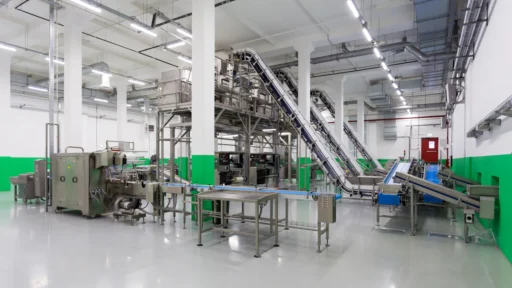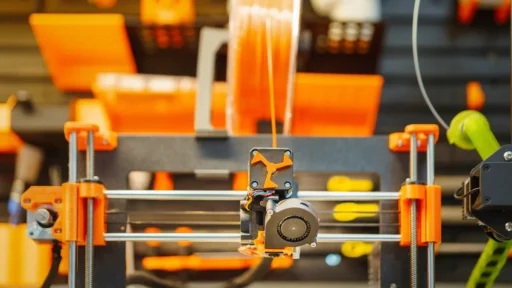Imagine transforming your plastic waste from a cumbersome problem into a valuable resource with just the flick of a switch. Enter the world of plastic granulator machines, where recycling becomes not only efficient but also astonishingly straightforward. If you’ve ever felt overwhelmed by the sheer volume of plastic piling up in your workspace or household, this technological marvel offers a seamless solution. By shredding plastics down into manageable granules, you can easily repurpose materials, reducing both environmental impact and disposal costs.
But what makes a plastic granulator machine a game-changer in the recycling industry? It’s the marriage of precision engineering and environmental stewardship, designed to maximize recycling efficiency like never before. Imagine a device that can crunch through mountains of plastic, turning them into tiny, reusable particles in mere moments. These machines are more than just tools; they are catalysts for change, enabling a circular economy where waste is minimized, and resources are continually reintroduced into the production cycle. Ready to delve deeper into how these machines work and why they are indispensable for both businesses and eco-conscious individuals? Let’s break it down.
Understanding Plastic Granulator Machines
Plastic granulator machines are powerful devices that play a crucial role in the recycling industry. They are designed to break down plastic waste into small, uniform granules, making it easier to process and reuse. These machines utilize various cutting mechanisms to shred plastics, including knives, blades, or rotating discs.
By understanding the different types of plastic granulator machines available, you can choose the one that best suits your recycling needs. Let’s explore some of the most common types:
Types of Plastic Granulator Machines
1. Single Shaft Shredders: These machines feature a single rotating shaft with blades that cut through the plastic waste. They are ideal for processing larger volumes of plastic and can handle a wide range of materials.
2. Double Shaft Shredders: As the name suggests, these machines have two parallel shafts with interlocking blades. This design provides enhanced cutting efficiency and is suitable for tougher materials like thick plastics or rubber.
3. Cutter Compactor Machines: These machines combine shredding and melting processes into one unit. They first shred the plastic waste and then heat it to melt and compact it into dense pellets.
Working Mechanism of Plastic Granulator Machines
The working mechanism of a plastic granulator machine involves several steps:
1. Feeding: The plastic waste is fed into the machine through a hopper or conveyor belt system.
2. Shredding/Cutting: The waste passes through sharp blades or rotating discs that cut it into smaller pieces or granules.
3. Separation/Sorting: After shredding, the granules are separated from any contaminants or non-plastic materials using techniques like air or water separation.
4. Pelletizing: In some cases, the granules are further processed to form uniform pellets, which can be easily transported and used in manufacturing processes.
Benefits of Using Plastic Granulator Machines
The use of plastic granulator machines offers numerous benefits:
1. Waste Reduction: By breaking down plastic waste into granules, these machines significantly reduce the volume of waste that ends up in landfills or oceans.
2. Resource Conservation: The granules produced by these machines can be reused in various industries, reducing the need for virgin plastic production and conserving valuable resources.
3. Cost Savings: Recycling plastic waste with a granulator machine can help businesses save on disposal costs and raw material expenses.
4. Environmental Impact: By promoting recycling and reducing plastic pollution, these machines contribute to a healthier environment and a more sustainable future.
Applications in Recycling Industry
The applications of plastic granulator machines extend across multiple sectors within the recycling industry:
– Plastics Recycling Plants: These machines are essential for processing plastic waste collected from households, industries, or municipal recycling programs.
– Manufacturing Facilities: Plastic granulator machines enable manufacturers to recycle their own production waste and integrate it back into their manufacturing processes.
– Plastic Product Manufacturers: Companies that produce plastic products can use these machines to recycle defective or excess inventory back into usable raw materials.
When selecting a plastic granulator machine, several factors should be taken into consideration:
1. Capacity: Determine the amount of plastic waste you need to process daily and choose a machine with the appropriate capacity.
2. Material Compatibility: Ensure that the machine can handle the specific types of plastics you work with, as different machines are designed for different materials.
3. Cutting Mechanism: Consider the cutting mechanism that best suits your needs, such as single shaft, double shaft, or cutter compactor.
4. Maintenance and Safety Features: Look for machines that offer easy maintenance and safety features to ensure smooth operation and protect operators from accidents.
Maintenance and Safety Tips for Plastic Granulator Machines
To ensure optimal performance and longevity of your plastic granulator machine, follow these maintenance and safety tips:
– Regular Cleaning: Clean the machine regularly to remove any residual plastic or debris that may affect its performance.
– Lubrication: Keep all moving parts well-lubricated to prevent friction and ensure smooth operation.
– Operator Training: Provide proper training to operators on how to safely operate the machine and handle any potential issues.
Environmental Impact of Plastic Granulator Machines
The environmental impact of plastic granulator machines is predominantly positive. By recycling plastic waste, these machines help reduce pollution, conserve resources, and minimize energy consumption compared to producing new plastics from scratch.
Future Trends in Plastic Recycling Technologies
The field of plastic recycling is constantly evolving, with new technologies emerging to improve efficiency and sustainability. Some future trends in plastic recycling technologies include:
– Advanced Sorting Techniques: Innovations in sorting technologies will enable more efficient separation of different types of plastics, making recycling processes even more effective.
– Chemical Recycling: Chemical recycling processes will allow for the conversion of plastic waste into chemical feedstocks or fuels, offering new avenues for plastic reuse.
– Intelligent Automation: Automation and artificial intelligence will play a significant role in streamlining recycling processes, improving efficiency, and reducing human error.
Conclusion: Embracing Sustainability with Plastic Granulator Machines
In conclusion, plastic granulator machines are invaluable tools in the recycling industry. They offer a sustainable solution to the ever-growing problem of plastic waste by transforming it into reusable granules. By choosing the right machine and following proper maintenance and safety practices, businesses and individuals can maximize their recycling efficiency and contribute to a greener future.






